Abstract
1. Brief stimuli were delivered to the carotid body chemoreceptors or the carotid sinus baroreceptors at different phases of the respiratory cycle in anaesthetized dogs. Chemoreceptor stimulation was achieved by injecting small volumes (0·2-0·5 ml.) of warmed saline equilibrated with CO2 near to the carotid bodies on both sides. Baroreceptor stimulation was achieved by injecting larger volumes (2-5 ml.) of saline equilibrated with air into the region of the carotid bifurcation on both sides, after first clamping the common carotid arteries.
2. When the vagus nerves were intact, but sympathetic nervous effects on heart rate were blocked by administration of propranolol, there was a prompt and pronounced bradycardia evoked when either baroreceptor or chemoreceptor stimuli were given in expiration, but little or no change in heart rate when they were given in inspiration.
3. When the vagus nerves were cut, but sympathetic nervous function was intact, respiratory modulation of both baroreceptor and chemoreceptor reflex effects on heart rate could still be demonstrated. The bradycardia evoked by either stimulus was more marked for stimuli given in expiration than for stimuli given in inspiration. A complementary response pattern for brief decreases in baroreceptor stimulation (carotid occlusions) was demonstrated: the tachycardia evoked by occlusions timed during inspiration was greater than that evoked by occlusions timed during expiration. All the reflex effects were mediated by the sympathetic system because they were abolished by administration of propranolol.
4. Typically, the sympathetic reflex effects were slight in comparison with the vagal reflexes evoked by either chemoreceptor or baroreceptor stimuli.
Full text
PDF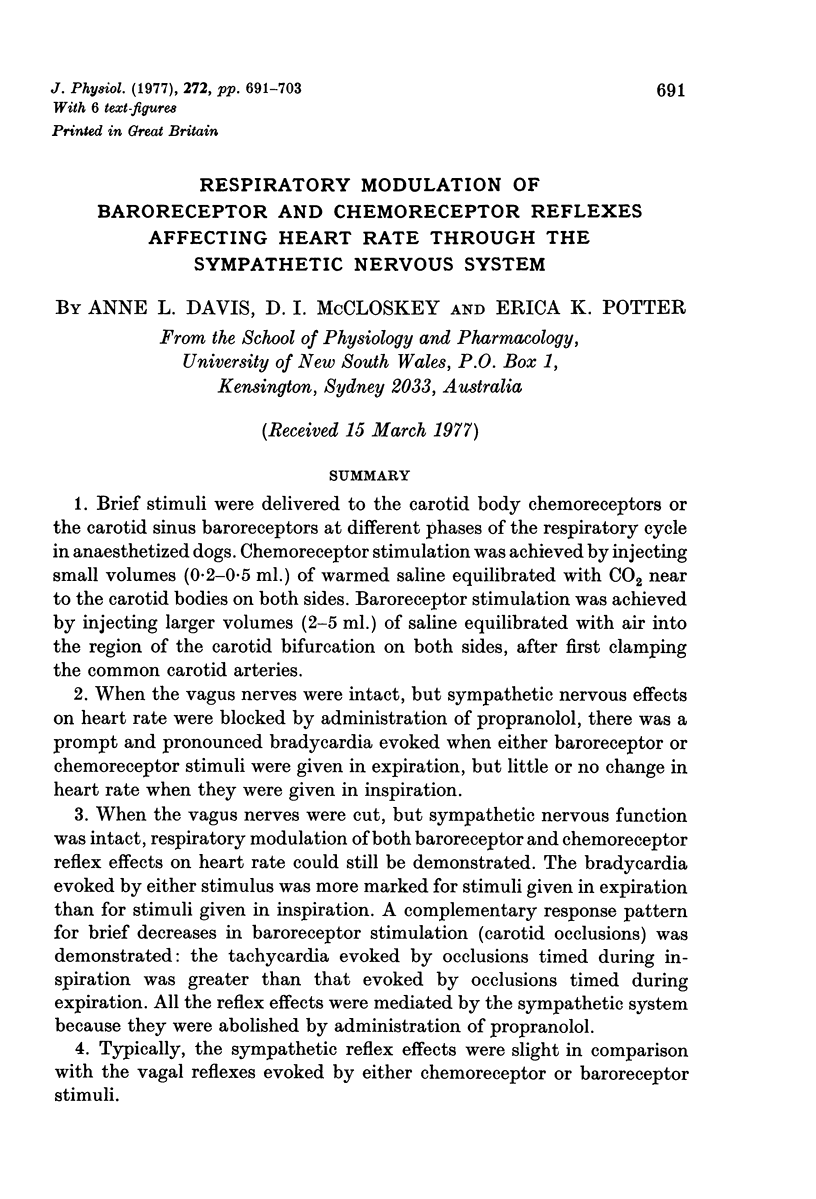
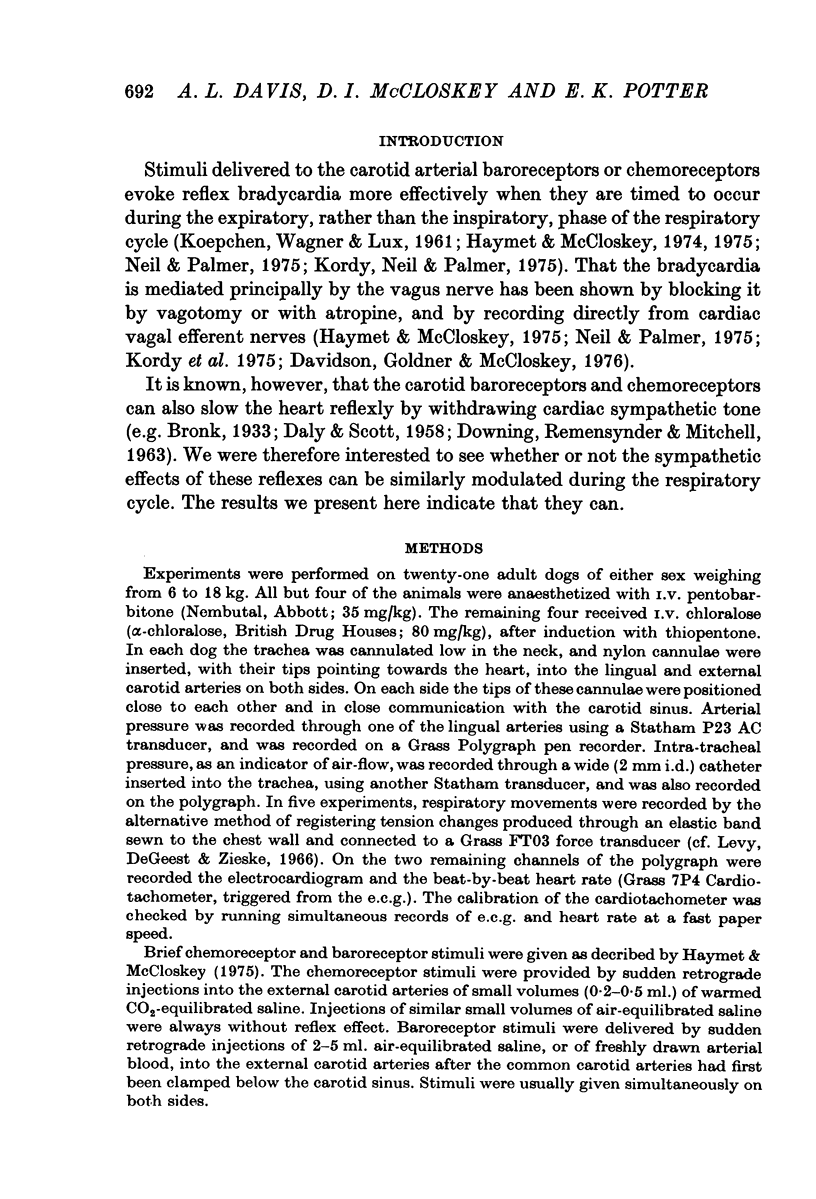
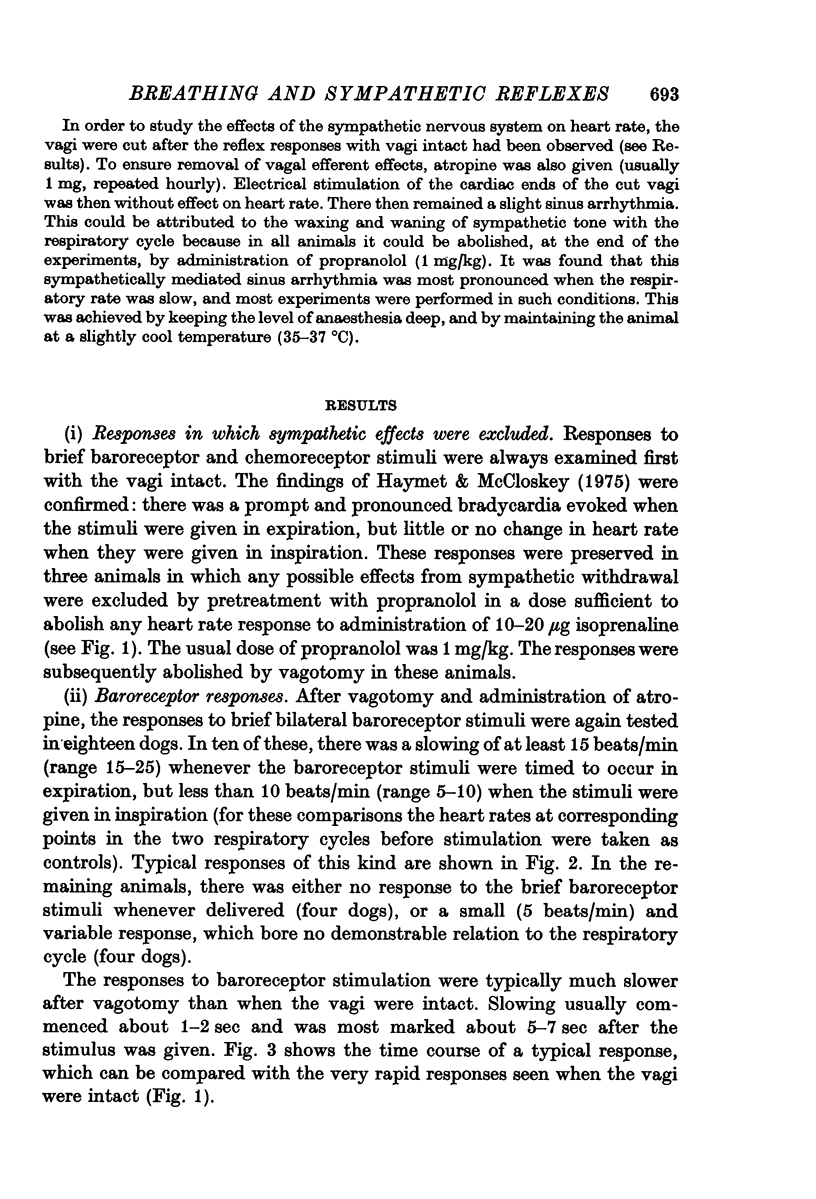
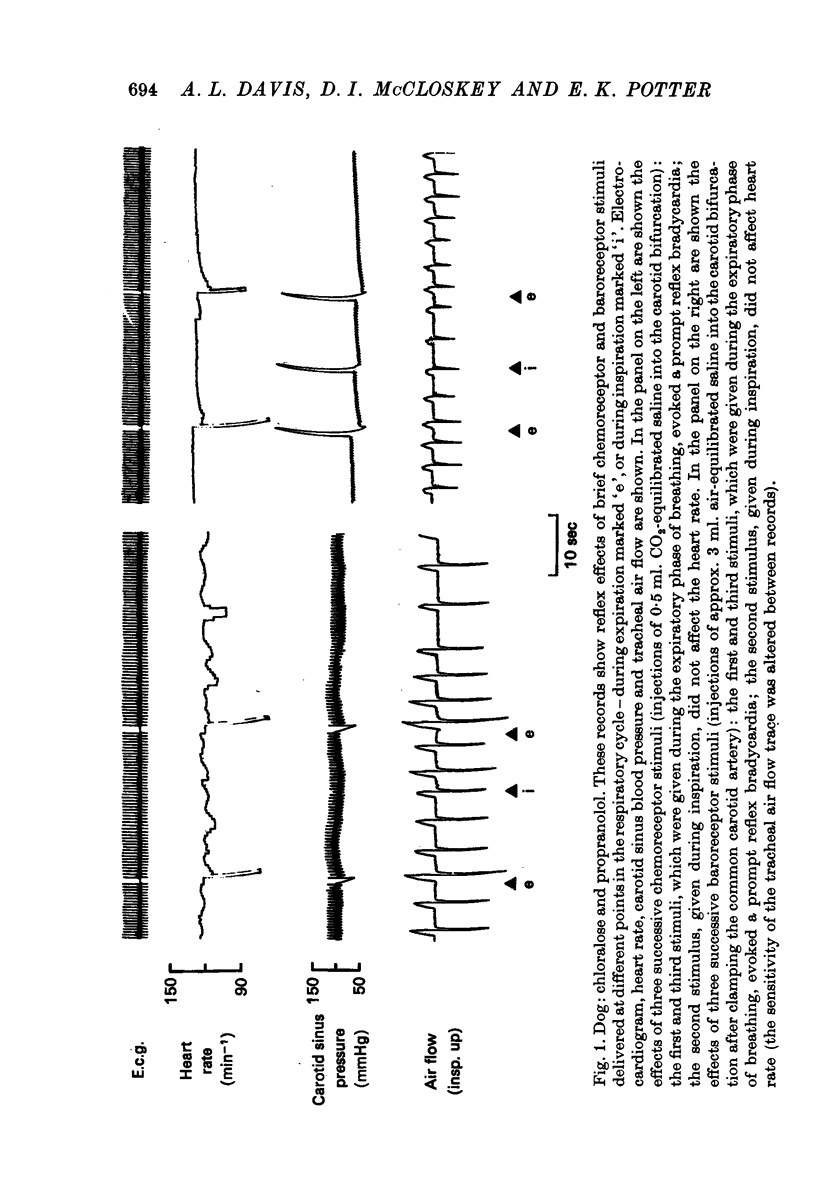
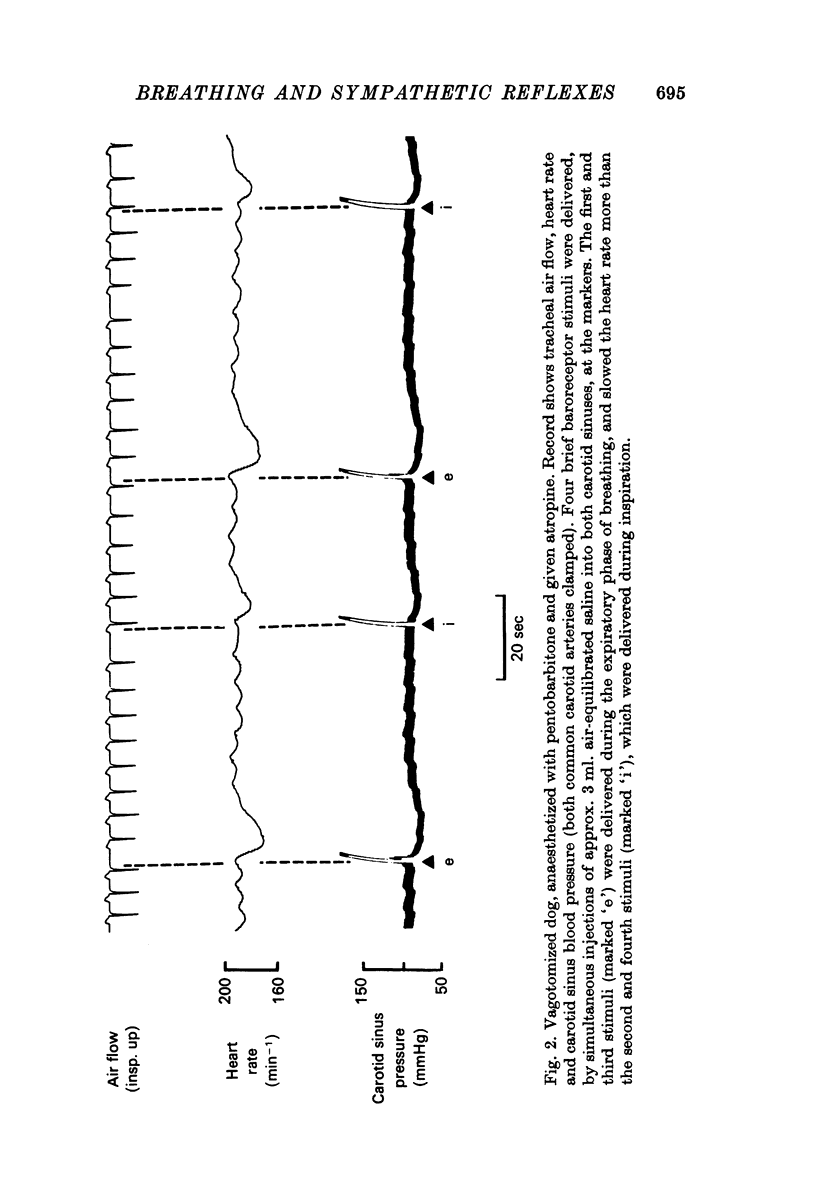
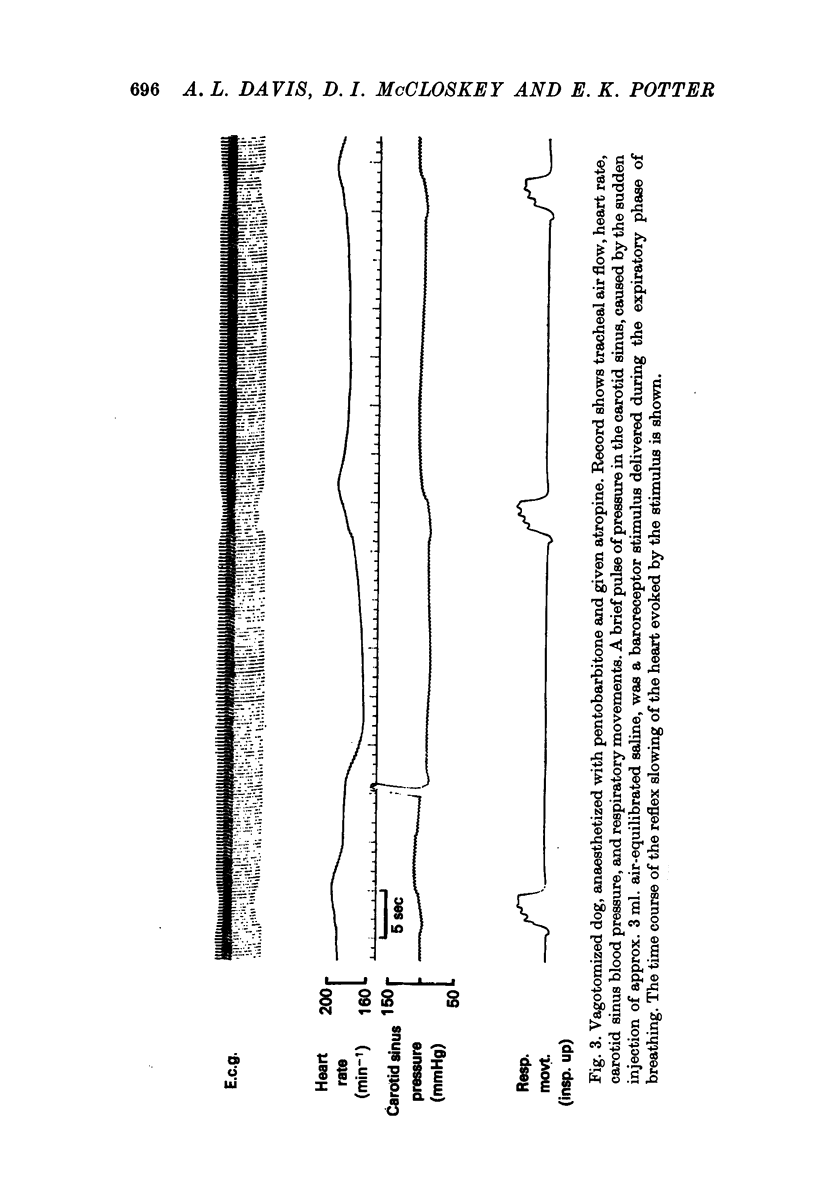
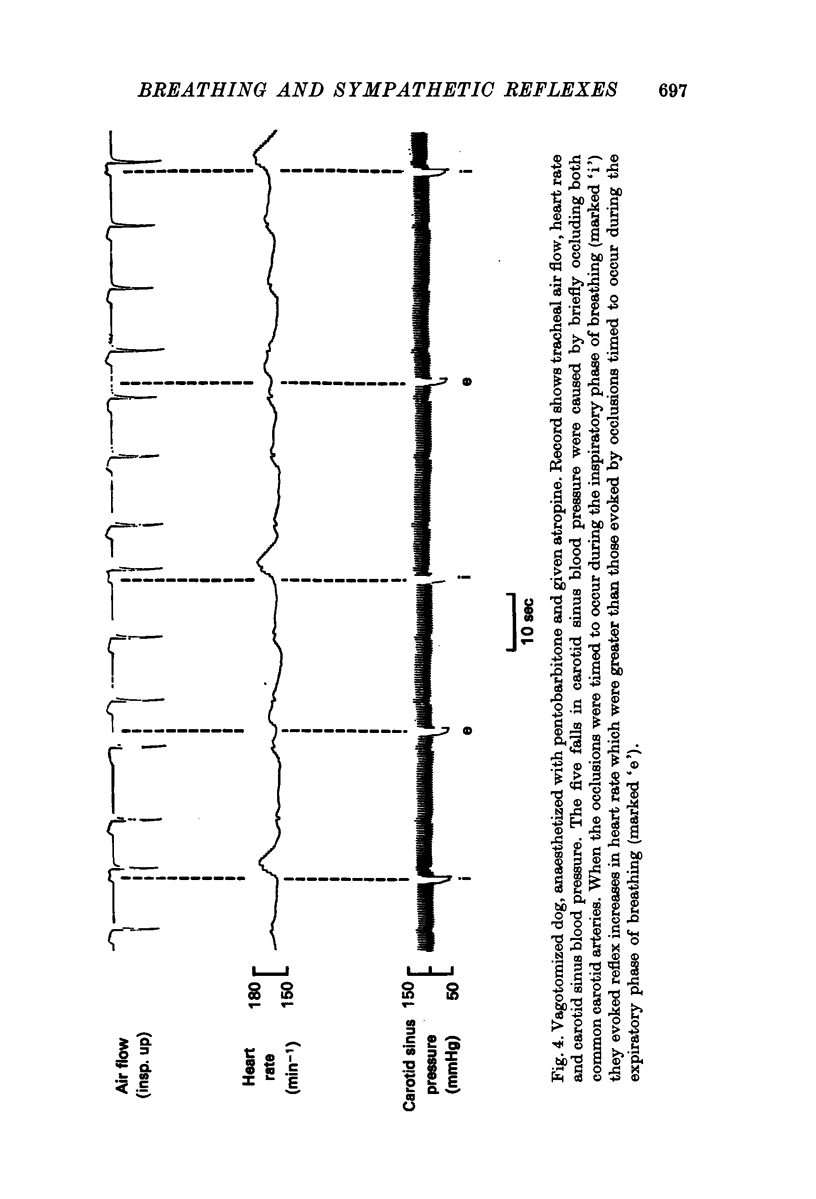
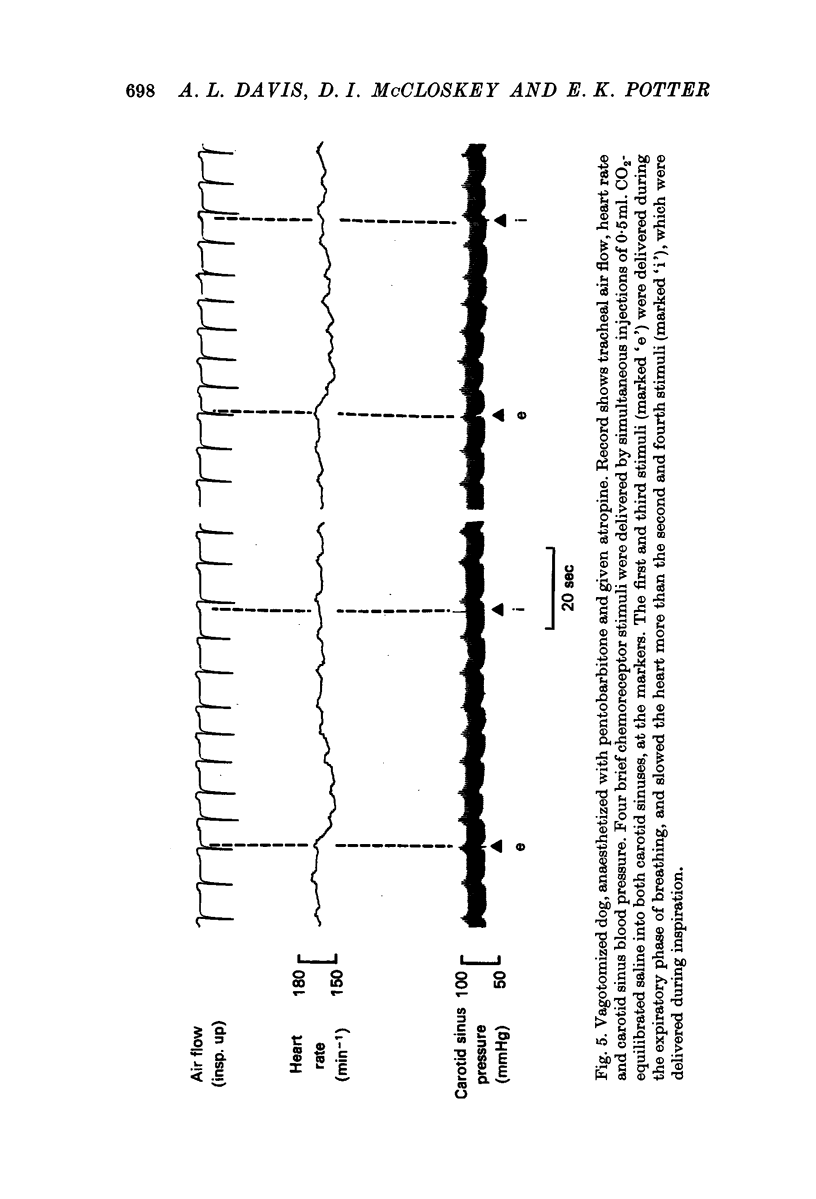
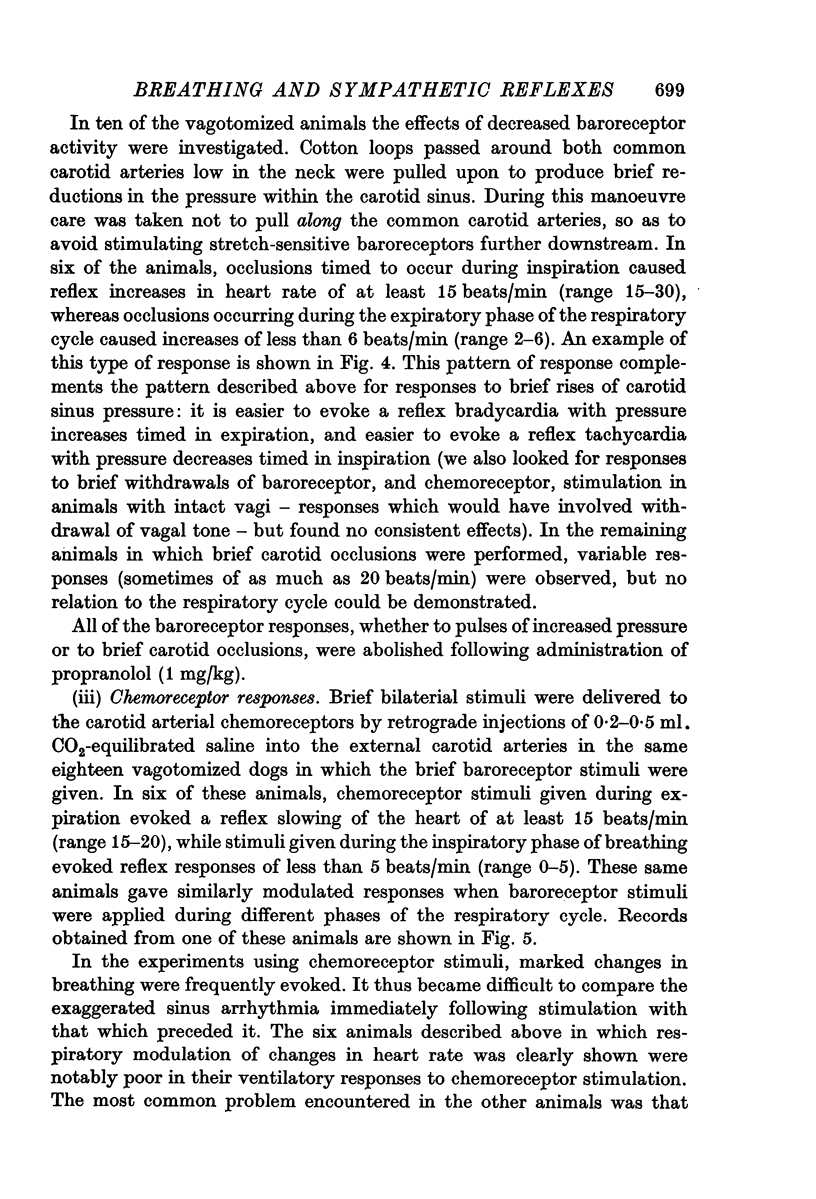
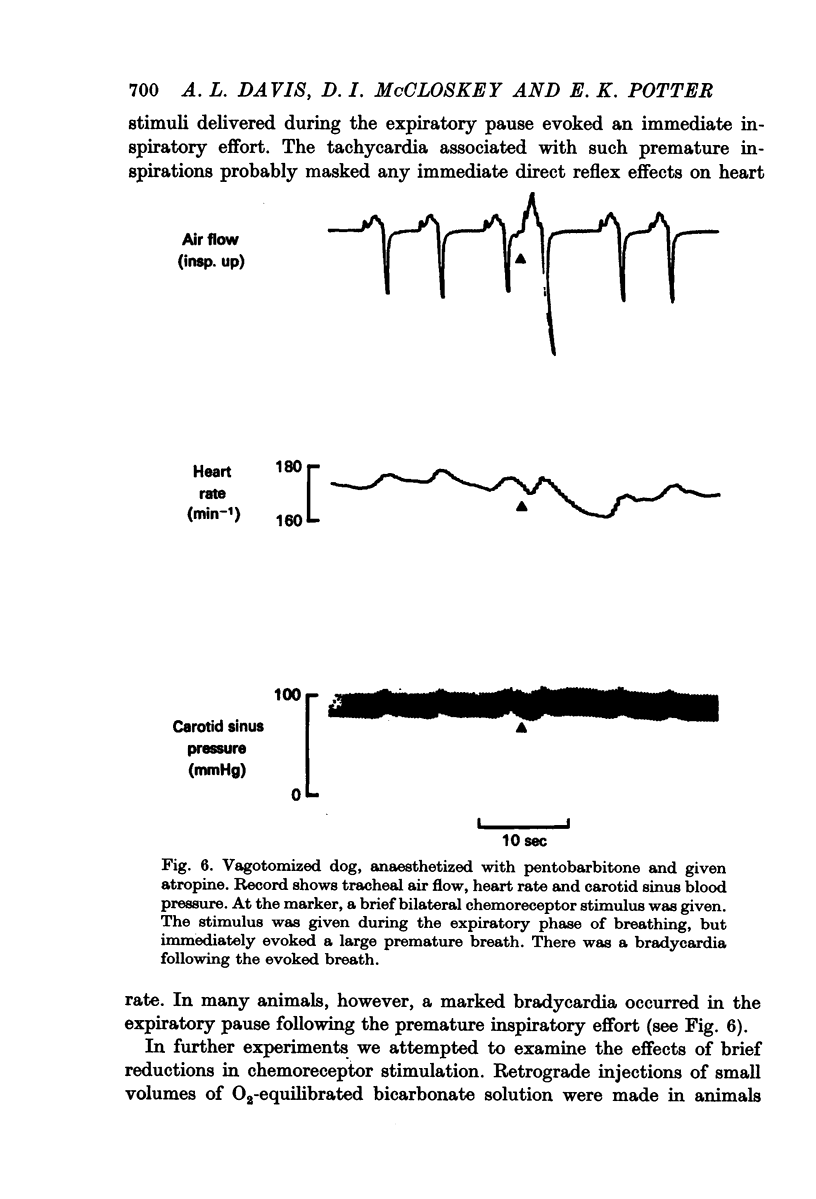
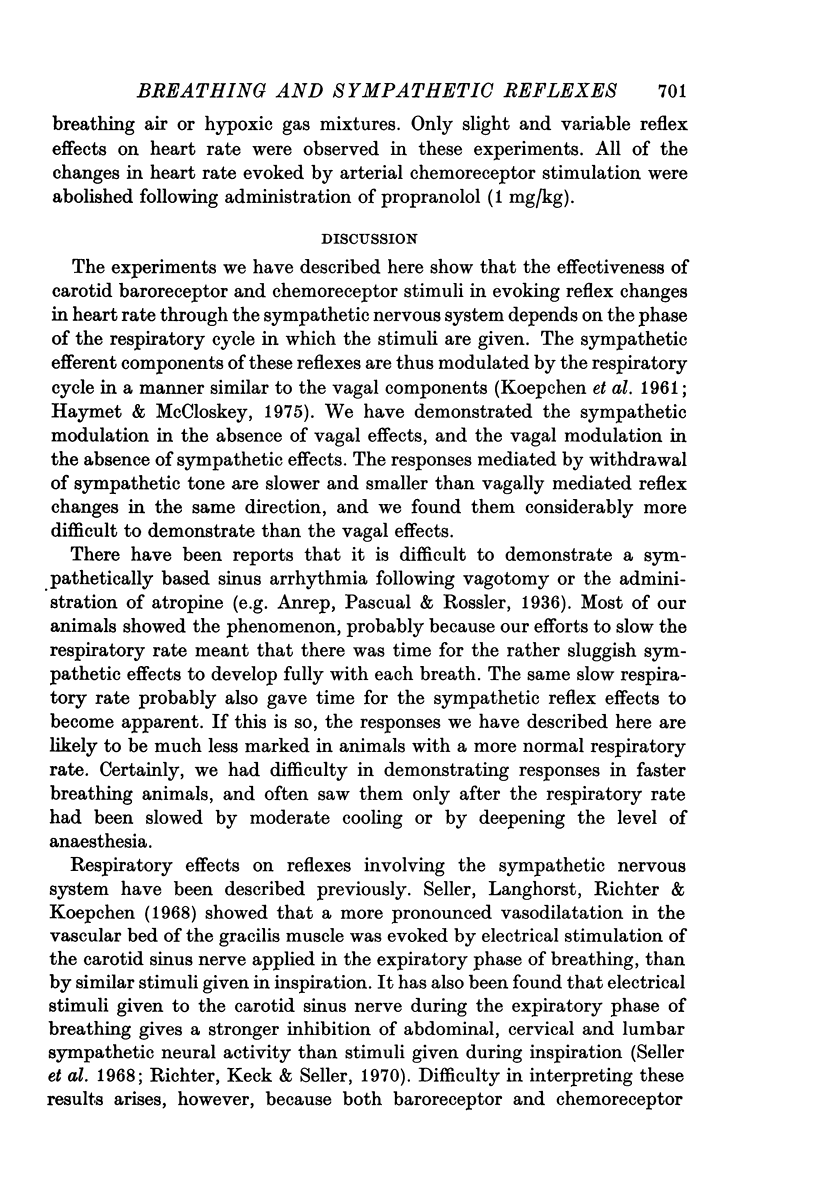
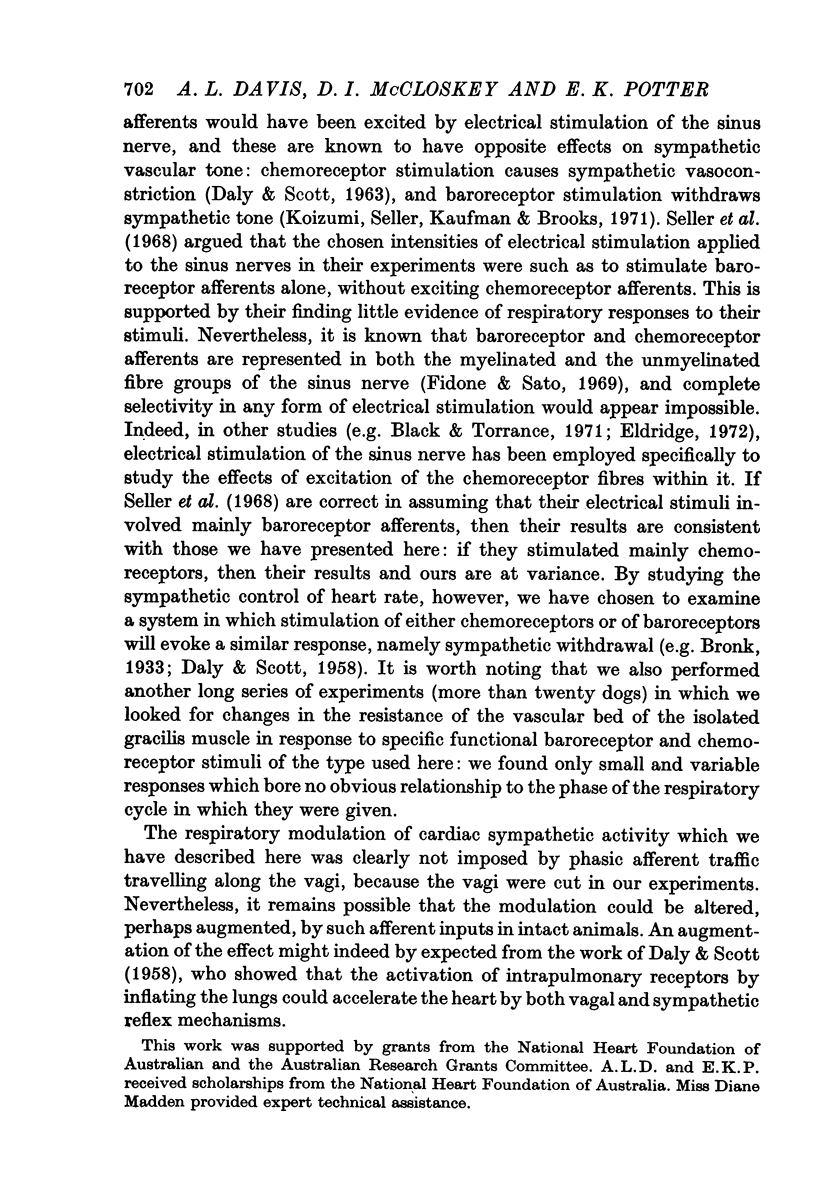
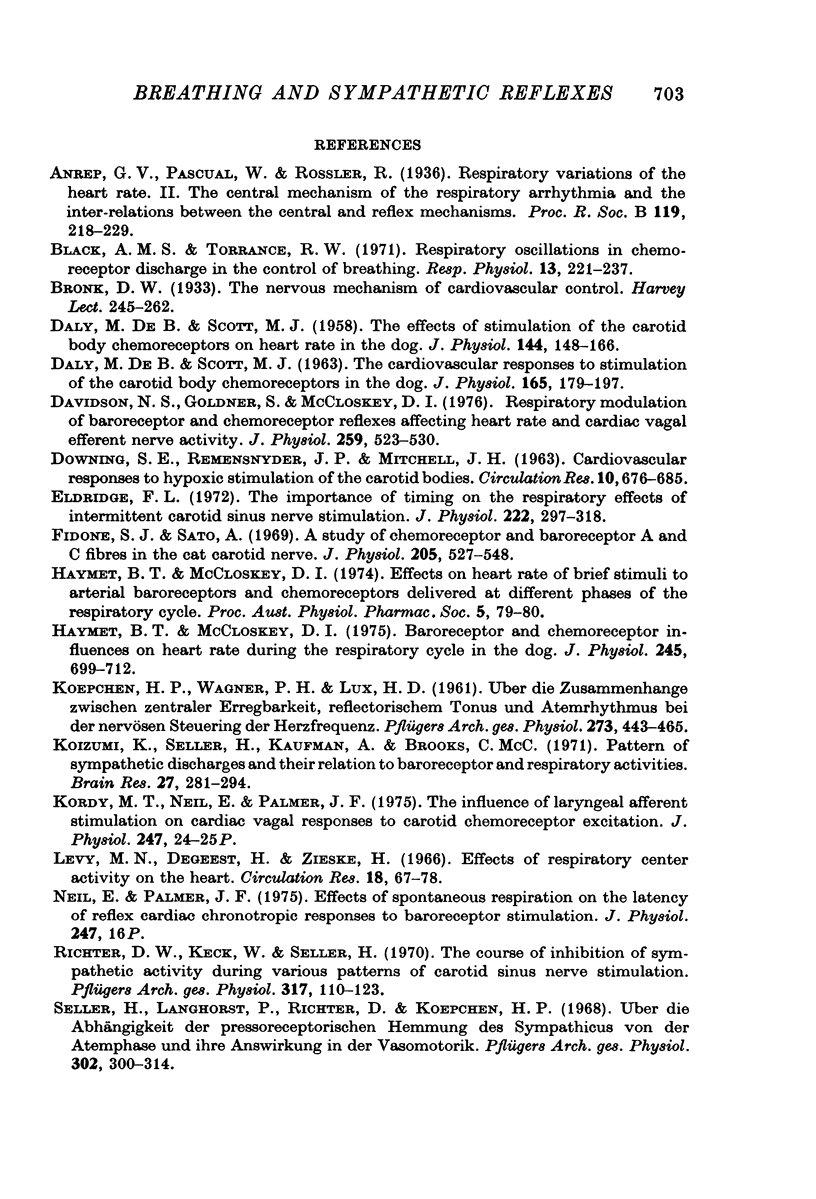
Selected References
These references are in PubMed. This may not be the complete list of references from this article.
- Black A. M., Torrance R. W. Respiratory oscillations in chemoreceptor discharge in the control of breathing. Respir Physiol. 1971 Nov;13(2):221–237. doi: 10.1016/0034-5687(71)90092-2. [DOI] [PubMed] [Google Scholar]
- DALY M. D., SCOTT M. J. The cardiovascular responses to stimulation of the carotid body chemoreceptors in the dog. J Physiol. 1963 Jan;165:179–197. doi: 10.1113/jphysiol.1963.sp007051. [DOI] [PMC free article] [PubMed] [Google Scholar]
- DE DALY M. B., SCOTT M. J. The effects of stimulation of the carotid body chemoreceptors on heart rate in the dog. J Physiol. 1958 Nov 10;144(1):148–166. doi: 10.1113/jphysiol.1958.sp006092. [DOI] [PMC free article] [PubMed] [Google Scholar]
- DOWNING S. E., REMENSNYDER J. P., MITCHELL J. H. Cardiovascular responses to hypoxic stimulation of the carotid bodies. Circ Res. 1962 Apr;10:676–685. doi: 10.1161/01.res.10.4.676. [DOI] [PubMed] [Google Scholar]
- Davidson N. S., Goldner S., McCloskey D. I. Respiratory modulation of barareceptor and chemoreceptor reflexes affecting heart rate and cardiac vagal efferent nerve activity. J Physiol. 1976 Jul;259(2):523–530. doi: 10.1113/jphysiol.1976.sp011480. [DOI] [PMC free article] [PubMed] [Google Scholar]
- Eldridge F. L. The importance of timing on the respiratory effects of intermittent carotid sinus nerve stimulation. J Physiol. 1972 Apr;222(2):297–318. doi: 10.1113/jphysiol.1972.sp009798. [DOI] [PMC free article] [PubMed] [Google Scholar]
- Fidone S. J., Sato A. A study of chemoreceptor and baroreceptor A and C-fibres in the cat carotid nerve. J Physiol. 1969 Dec;205(3):527–548. doi: 10.1113/jphysiol.1969.sp008981. [DOI] [PMC free article] [PubMed] [Google Scholar]
- Haymet B. T., McCloskey D. I. Baroreceptor and chemoreceptor influences on heart rate during the respiratory cycle in the dog. J Physiol. 1975 Mar;245(3):699–712. doi: 10.1113/jphysiol.1975.sp010869. [DOI] [PMC free article] [PubMed] [Google Scholar]
- KOEPCHEN H. P., WAGNER P. H., LUX H. D. [On the relationships between central excitation, reflex tone and respiratory rhythm in nervous regulation of heart frequency]. Pflugers Arch Gesamte Physiol Menschen Tiere. 1961;273:443–465. [PubMed] [Google Scholar]
- Koizumi K., Seller H., Kaufman A., Brooks C. M. Pattern of sympathetic discharges and their relation to baroreceptor and respiratory activities. Brain Res. 1971 Apr 2;27(2):281–294. doi: 10.1016/0006-8993(71)90254-x. [DOI] [PubMed] [Google Scholar]
- Kordy M. T., Neil E., Palmer J. F. The influence of laryngeal afferent stimulation on cardiac vagal responses to carotid chemoreceptor excitation. J Physiol. 1975 May;247(1):24P–25P. [PubMed] [Google Scholar]
- Levy M. N., DeGeest H., Zieske H. Effects of respiratory center activity on the heart. Circ Res. 1966 Jan;18(1):67–78. doi: 10.1161/01.res.18.1.67. [DOI] [PubMed] [Google Scholar]
- Neil E., Palmer J. F. Effects of spontaneous respiration on the latency of reflex cardiac chronotropic responses to baroreceptor stimulation. J Physiol. 1975 May;247(1):16P–16P. [PubMed] [Google Scholar]
- Richter D. W., Keck W., Seller H. The course of inhibition of sympathetic activity during various patterns of carotid sinus nerve stimulation. Pflugers Arch. 1970;317(2):110–123. doi: 10.1007/BF00592496. [DOI] [PubMed] [Google Scholar]
- Seller H., Langhorst P., Richter D., Koepchen H. P. Uber die Abhängigkeit der pressorectptorischen Hemmung des Sympathicus von der Atemphase und ihre Auswirkung in der Vasomotorik. Pflugers Arch. 1968;302(4):300–314. doi: 10.1007/BF00592730. [DOI] [PubMed] [Google Scholar]


